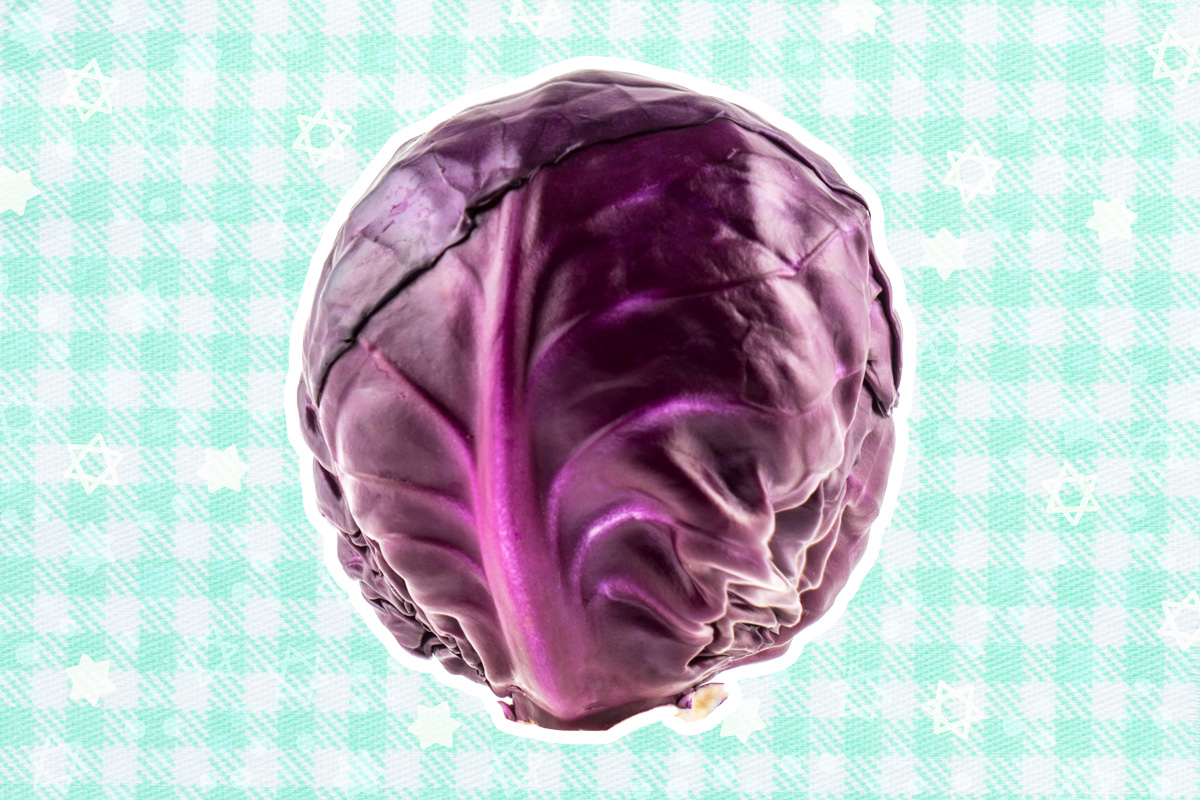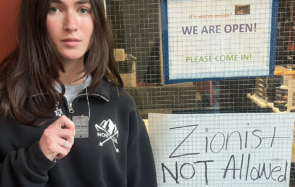If you love a good Jewish deli, you know that cabbage has an important place in the Jewish American dining experience. Whether it be a sweet and crunchy side of coleslaw that elevates any deli sandwich or a “healthy” Russian cabbage salad at the pickle bar (is there anything better than a Jewish deli with a pickle bar?) or even a warm and comforting dish of holishkes — that yummy Eastern European Jewish stuffed cabbage that we overindulge on Sukkot — cabbage is the little vegetable that could.
Cabbage has long been a staple in Ashkenazi and Eastern European homes, and it definitely was in my Israeli Ashkenazi home. The leafy vegetable is a versatile queen that’s not picky about what soil it grows in — but in my home, we love a simple cabbage salad. The dish is usually made up of the chopped veg — purple or white, doesn’t matter — with some salt and vinegar. My son literally cannot wait for cutlery and shovels the salad into his mouth by the handful, making the most delightful crunching sounds. There is something so heartwarming in watching him eat the type of greenery that sustained my people for so long.
Jewish food historian Gil Marks writes in the “Encyclopedia of Jewish Food” that cabbage has been cooked by Jews for over two millennia. As this Nosher article explains, the Greeks helped it enter Jewish cuisine, and it is even mentioned in the Talmud (!) as one of “the six things that heal a sick person.” Cabbage was the signature smell of the Jewish shtetl — “boiled, braised, stewed, and pickled for sauerkraut.” One of the oldest vegetables grown for food, cabbage is easy to grow and to preserve, making it an ideal food for those less than affluent Jewish communities.
And now, in 2025, cabbage is having a moment. I can’t scroll for one minute on my social media apps without a head of green or purple leafy dreaminess coming onto my feed. Maybe it’s the fact that people are trying to save on food costs, fearing an unstable economy, maybe it’s because of cabbage’s many health benefits, or maybe it’s just because we all need something that tastes so good — so sweet when it’s cooked, so tangy and crunchy when pickled, so bright when eaten fresh. People are freezing entire heads of cabbage to make for easier cabbage rolls, roasting it, steaming it, chopping it and snacking on it from gigantic bowls.
As it to be expected, there are quite a few Jewish food mavens to thank for this phenomenon (Jewish delis even helped make the classic St. Patrick’s day cabbage and corned beef a thing — you’re welcome). Some would argue that cabbage first became an internet sensation back in 2021 thanks to Jewish recipe writer Melissa Ben-Ishay, owner of the New York-based cupcake chain Baked By Melissa, who gave us a delicious green goddess cabbage recipe that sent fans into a tailspin. When you google “viral cabbage,” as one does, it’s the first recipe you see, including many an article that praises its viral-worthiness. The salad has an almost neon green flavorful dressing that cabbage is a perfect conduit for.
Ben-Ishay is still often posting delicious cabbage recipes on her TikTok and Instagram. This Hanukkah she slathered that delicious cabbage salad on a freshly fried latke. She chops her cabbage with a chef’s knife or a peeler and puts it in an Israeli pita with cottage cheese and that salad, a perfect take on the classic sandwich of my youth. Recently, she paid tribute to another Jewish recipe maker, Ruhama, making a version of her roasted cabbage salad:
Another Jewish cabbage recipe is this Shabbat cabbage salad by Israeli recipe maker Sivan, which has gotten millions of views on Instagram and has managed to make people go crazy about the most controversial of root vegetables: fennel. Truly, what can’t cabbage do?
In Israel, where some of these influencers grew up (Ben-Ishay’s husband is Israeli), cabbage has a respectable place, with cabbage recipes going just as viral in the country — deconstructed stuffed cabbage cake and crunchy vinegary salads. The Hebrew word for cabbage is “kruv,” and rosh kruv, or “cabbage head,” is a term used to call someone, well, not so bright. Yet it’s also the name of a popular kids’ show that started airing in 1975 and has the most endearing of opening tunes. My own childhood was full of tunes about cabbage, from a song about a cabbage dancing with a cauliflower to one about how sitting down on a cabbage can help cure your blues (yet to be scientifically proven).
My parents grew up with a lot of canned coleslaw, which they have fond nostalgic memories of. And I grew up with lots of cabbage around me. There’s Middle Eastern stuffed cabbage, malfoof or malfouf makhshi, and minty garlicky malfoof salad we got at the market and restaurants. We had stuffed cabbage and often that delicious simple cabbage slaw, which was perfect on the side of heavier wintry dishes like the Shabbat casserole cholent. Two other cabbage dishes didn’t really make it into our home but which I found in many Israeli homes and always adored: a candy sweet red cooked cabbage — simply cooked in a pot with tomato paste and a little bit of lemon — and what I think of as a truly Israeli slaw, purple cabbage in mayonnaise. Many people make it at home, but it’s also very much a pre-packaged refrigerated food staple that you can find in any supermarket, still perfectly crunchy and sweet and taking on the most luminescent pink-purple hue. Israeli sandwich shops have it as a topping, and it often comes on a plate of “salatim” — Israeli “mezze,” if you will. For those days when you can’t afford anything fancy, two slices of bread, turkey pastrami and some of that purple slaw is a simple, delicious comfort.
There’s a video that to me has become in some way emblematic of the post-October 7 Israeli response, which features comedian Etai Ben Simhon talking about the chaotic comfort meals he managed to put together in the sea of grief: a slice of half-frozen bread with mac and cheese and purple cabbage, two small tubs of that same purple cabbage in mayo with a pint of ice cream and a Coke Zero. Watching the video was maybe the first time I laughed after that terrible Saturday, and it didn’t feel sacrilegious. There was something so real in trying to find an anchor in some strange combination of nostalgic, comforting and familiar foods. Even just looking at pictures of the tubs of red cabbage is transporting. It’s funny, but also strangely poignant, to think of generations of Jews, from the Talmud to this modern day, taking comfort in the same leafy vegetable.
Some Jewish cabbage recipes you and your kids might love:
Israeli cabbage salad from Taste of Kosher
Sivan’s fresh green salad from JLiving
No mayo Israeli cabbage salad from Verred’s Israeli Cooking








